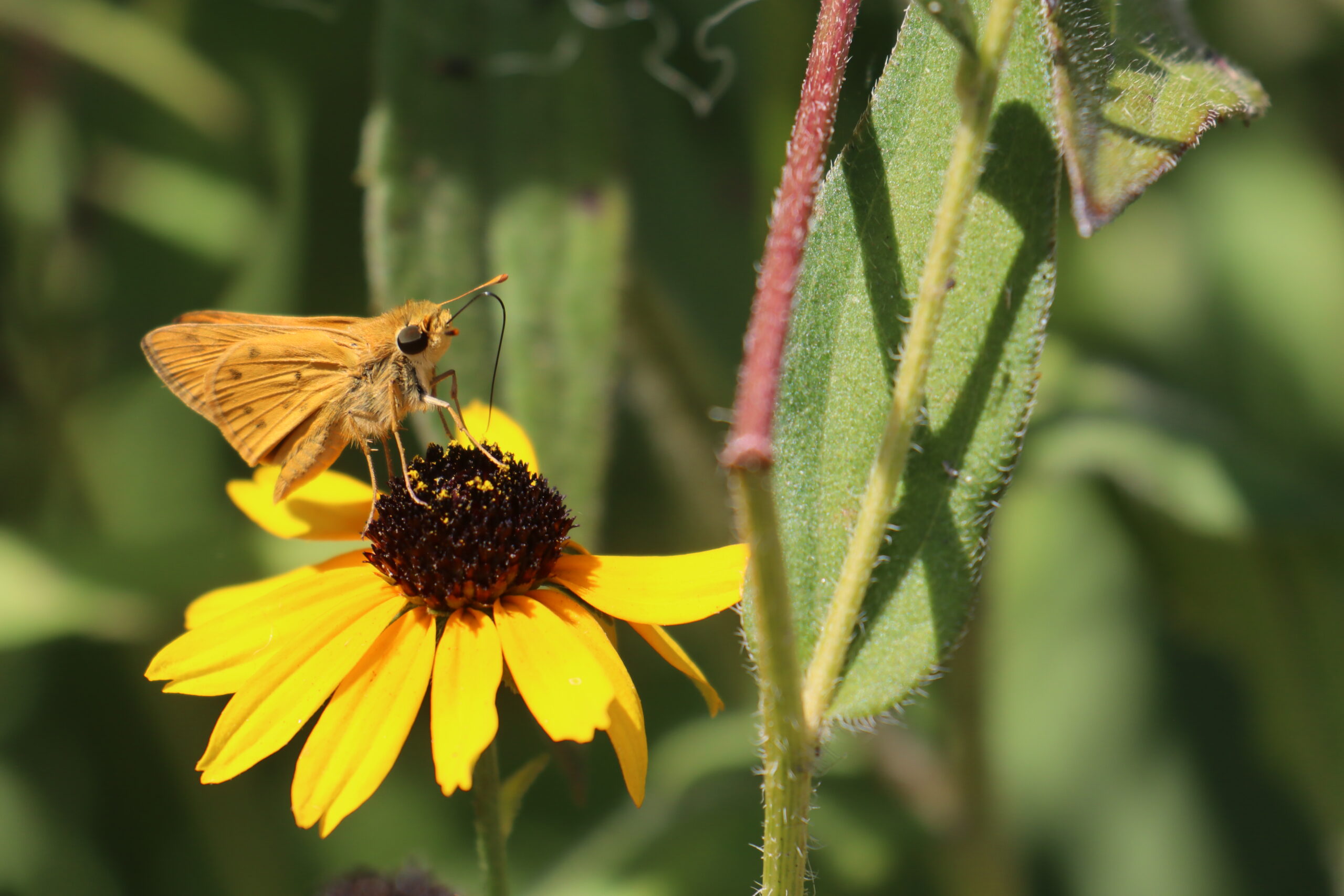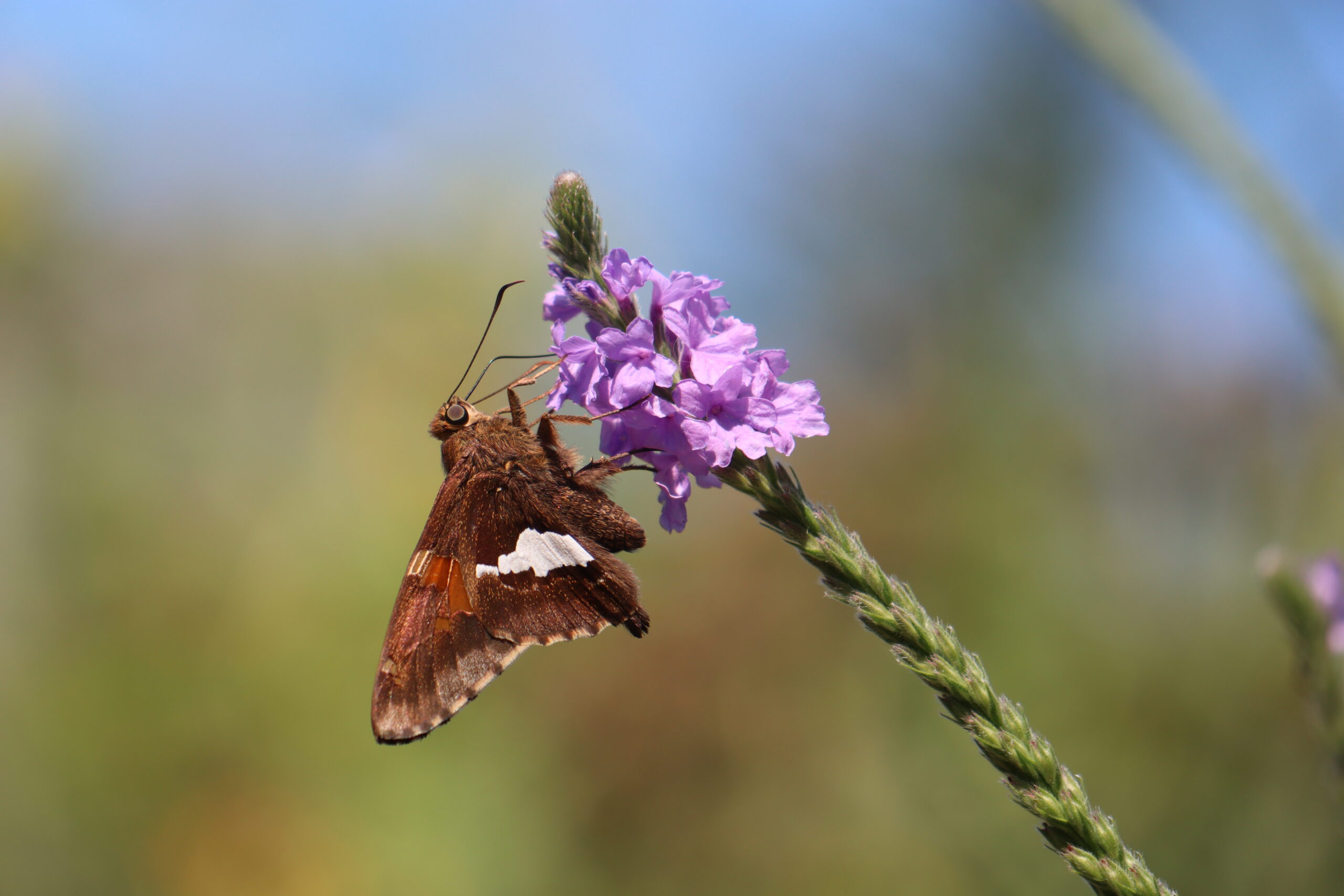Author: Lisa Trapp
For many of us, the first insect that caught our attention and was easily identifiable was the butterfly. They’re commonly spotted as they float from flower to flower, or meander through the air down a forest path or nature trail. Night owls might be more fascinated with their evening counterparts, moths. There are at least 125,000 species of Lepidoptera (the order of insects that includes butterflies and moths) worldwide and 12,000 species just in North America. So it should come as no surprise that you’ve probably seen your fair share of these fluttering friends showing off their bright colors and dance-like movements. Within a sea of insects in the garden it is often easy to pick out and find the butterflies in the mix, at least, butterflies that follow “the rules.” Skippers (Hesperiidae spp.) are considered butterflies, but they don’t quite fit the bill of what we usually expect.
There are a couple of quick rules about how to differentiate butterflies from moths. Butterflies typically fly during the day, rest on flowers with their wings closed, and have sleek, mostly hairless bodies with long, clubbed, antennae. Moths, on the other hand, are typically nighttime pollinators, keep their wings open at rest, and have stocky hair-covered bodies with feathery comb-shaped antennae. Skippers are sometimes thought to be an intermediary between butterflies and moths because they actually have characteristics of both. These curious insects are daytime pollinators, like other butterflies, but have short stocky bodies covered in hairs, giving them a moth-like appearance. Their antennae are short and wide set on the head with hooks on the ends. When at rest they typically hold their wings at a 45 degree angle, neither fully open nor fully closed.

With around 275 different species of skippers in North America, these insects are easy to spot once you know what to look for. Their name comes from the rapid, direct, and bouncing flight habit that makes them appear to “skip” through the garden. There are 5 subfamilies of skippers currently identified worldwide, though there are still skippers waiting to be cataloged at the species level, and reclassification for these Lepidopterans is an ongoing occurrence. Many of them look extremely similar and some can present almost identically to others, making them hard to distinguish, especially in the field. Some can only be identified through surgical procedures in a lab setting!
Many skippers pupate overwinter and form a chrysalis of silken strands and leaves. This makes them another really important species that benefits from leaf litter being left in the garden over winter. Adult skippers are primarily nectar drinkers, but they will also visit decaying matter and wet mud to access additional minerals and nutrients. These bouncing butterflies are fairly common along the Low Line. Next time you visit, keep an eye out and you might spot some as they move from plant to plant, or skip playfully along the grassy lawn.
REFERENCES:
National Audobon Society, Field Guide to Insects & Spiders (Knopf, 1980)
https://www.vararespecies.org/
https://www.butterflysocietyofva.org/Virginia-Insects
https://bugguide.net/node/view/189
https://www.naba.org/pubs/ab143_144/ab143_4taxonomists_all_in_the_subfamily.pdf
https://www.vararespecies.org/list


